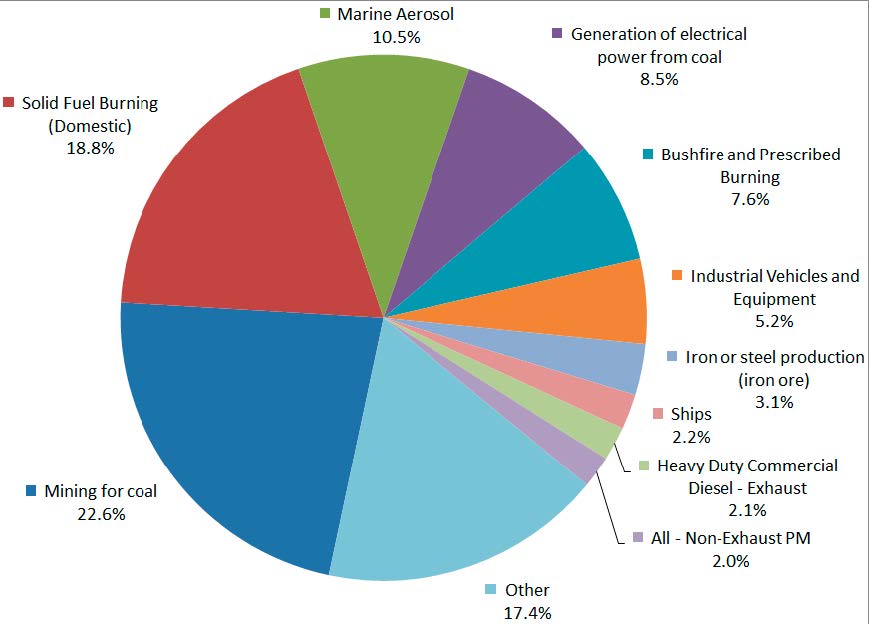The EPA implements various actions to target particle
pollution depending on the source, concentration, local and regional
meteorology, land uses, nearby receptors and other factors.
The EPA is responsible for managing the impacts of smoke from wood
heaters under Part 5.4, Division 3 of the POEO Act. Excessive smoke from
incorrectly installed or operated wood heaters is a major contributor to
particle pollution in some areas of NSW during cooler months when unburnt gases cool as
they travel up the chimney.
EPA works with local councils to reduce pollution from wood
heaters, including training council officers in
- enforcing
legislation regarding excessively smoky chimneys
- improving
wood heater installation practices
- undertaking
community education campaigns – the EPA has also produced a wood smoke pollution resource kit containing resources
such as sample media releases and advertisements

The EPA works with the NSW Rural Fire Service to reduce air
pollution during planned burns and bushfires. The NSW Rural Fire Service has
produced a bushfire environmental assessment code, which contains strategies
to reduce smoke during hazard reduction burns.
The Bushfire Coordinating Committee has developed a Bushfire Smoke Management policy to guide NSW fire
and land managers, both public and private, in balancing their fire management
and air quality management obligations.
The
impacts of climate change could mean some areas of NSW experience warmer
temperatures and lower rainfall, leading to more bushfires and dust storms
which are both key sources of particle pollution.
After harvesting crops such as cotton, wheat and rice, some farmers
burn the remnants or stubble to reduce the risk of passing on diseases or pests
to the next crop, and reduce weed seed banks. However, this practice can cause
significant local particle pollution.
The EPA’s guidance note advises councils of the regulations
regarding agricultural stubble burning and alternatives which are better for
the environment and human health.
The EPA’s smoky vehicle enforcement program aims to reduce air emissions
by ensuring that owners properly maintain their vehicles. A smoky vehicle is
any motor vehicle that emits visible smoke continuously for more than ten
seconds. Read more about smoky vehicles.
The Diesel and Marine Emissions Management
Strategy addresses emissions from non-road diesel equipment used at EPA-licensed
activities such as coal mining, equipment used by Government agencies or their
contractors, diesel locomotives operating in NSW, and containerised and bulk
cargo and cruise shipping at NSW ports. It sets out actions that the EPA has
implemented and further steps it is taking to ensure that NSW benefits from the
availability of feasible and cost-effective approaches and technologies to
reduce non-road diesel and marine emissions.
From 2011 to December 2014, the EPA ran the
Clean Machine Program, which supported diesel emissions reductions from
non-road diesel equipment by promoting procurement of lower emitting equipment,
better worksite practices, and subsidising retrofitting of heavily polluting
machines with exhaust emissions after-treatment devices (partial diesel
particle filters). The program targeted diesel plant and equipment such as
cranes, loaders, graders, dump trucks and tractors, used mainly in ports,
quarries, waste facilities and construction.
More than 40 organisations throughout the greater metropolitan
region, including private businesses and local councils, participated in the
program and the NSW Government provided almost $806,000 in subsidies to
retrofit 141 diesel machines. It is estimated that these retrofits will reduce
diesel particle emissions by about 37 tonnes over 10 years, yielding
substantial public health benefits. Read more about the Clean Machine Program.
The
EPA has instigated several measures to reduce dust from coal mines including
- commissioning a benchmarking study to identify the main sources of
particle pollution and suggest international best practice measures to minimise
emissions
- implementing the Dust Stop program where each mine operator
carries out a site-specific determination of best management practice to reduce
emissions
- imposing pollution reduction programs on coal mining licences.

Following the severe dust storms throughout NSW in 2002 and
2009, the Office of Environment and Heritage (OEH) launched DustWatch, a
program that monitors and reports on the extent and severity of wind erosion
across Australia. NSW Local Land Services and the EPA work in partnership with OEH
to maintain the network of DustWatch stations and volunteers.
With the help of community volunteers, DustWatch advises
scientists, farmers, land managers and the community about dust conditions and
wind erosion through
OEH
has recently started to install low cost air quality monitoring instruments at
selected DustWatch sites, such as Wagga Wagga, to help determine the sources
and type of particle pollution in the area.




